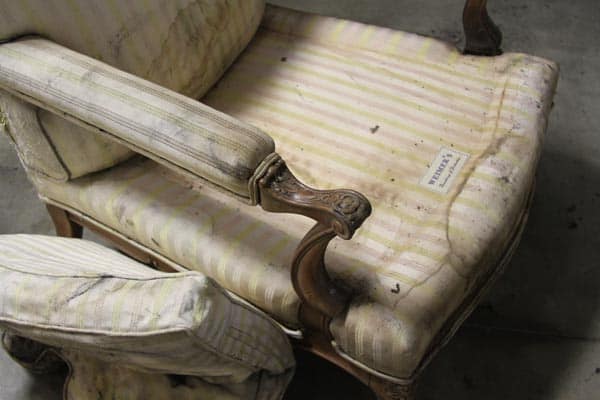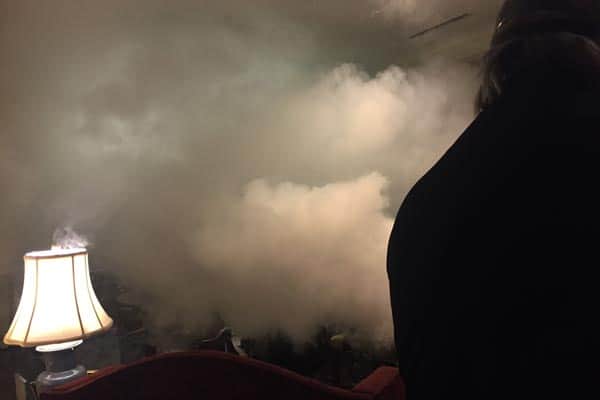Smoke Damage Cleaning & Smoke Odor Removal
Cleaning smoke damage and soot in your home are not easy and without the right tools and knowledge, you can actually cause more damage. During a fire, even a small fire in one room, smoke can fill up your entire home. Smoke gets everywhere from behind cabinets, light sockets, HVAC system, can stain your walls and even create smoke chains in the corners of your walls and ceilings.
Soot is difficult to clean and should only be trusted by a properly certified restoration professional. Soot is typically oily and can damage furniture, walls, clothing and more if not treated properly.
What’s The Difference Between Soot and Smoke?
Soot is made up of tiny black particles that were created as a result of the incomplete combustion of wood, oil coal, or other fossil fuels. After a house fire, soot can spread throughout the whole home, staining walls, flooring, furniture, and other surfaces with the oily, sticky substance. Soot is also very acidic and can cause poor air quality inside the home if not removed quickly.
Smoke is a very fine vapor that can be seen with the human eye and is produced as a result of a fire or other burning matter. The chemicals in the smoke can vary depending on the type of material that is burning. Smoke can cause irritation to the eyes, nose, and throat even if exposure is short lived.
Smoke Smell Removal
Removing the smell can be a tricky thing after a home fire if you don’t know what you’re doing. First Restoration Services employees certified fire smoke restoration professionals for all our fire smoke cleaning removal jobs. We have the experience and the correct tools to get the job completed correctly the first time. Sometimes a homeowner will consider a general contractor/builder they are familiar with for the fire damage cleanup. However, the smoke smell removal is a process they (builder/contractor) have never gone through before and don’t have any previous job experience. As a homeowner, the last thing you want to do is hire a contractor to repair and clean your home after a fire only for it to still smell like smoke.
 Emergency
Emergency Residential Restoration
Residential Restoration Commercial
Commercial Water Removal
Water Removal Water Damage
Water Damage Water Damage Repairs
Water Damage Repairs Flood
Flood Sewage Cleanup
Sewage Cleanup Fire Board
Fire Board Fire Damage
Fire Damage Smoke Damage
Smoke Damage Commercial Water Damage
Commercial Water Damage Commercial Fire Damage
Commercial Fire Damage Mold Inspection
Mold Inspection Mold Removal
Mold Removal Wind
Wind Specialty
Specialty TOMI
TOMI Crime Scene
Crime Scene Case
Case Helpful
Helpful ERP Client
ERP Client Construction
Construction Kitchen
Kitchen Bathroom
Bathroom Home
Home Office
Office Book Remodel
Book Remodel About
About Contact Us
Contact Us Our Story
Our Story Events
Events Media
Media FAQ
FAQ Apply Now
Apply Now Careers
Careers Plumber Referral
Plumber Referral All Posts
All Posts Cleaning
Cleaning Commercial
Commercial Schools & Colleges
Schools & Colleges Churches
Churches Healthcare Facilities
Healthcare Facilities Senior Living Homes
Senior Living Homes Government Municipalities
Government Municipalities Hospitality
Hospitality Industrial
Industrial Multi-Family Housing
Multi-Family Housing


 Dry Smoke
Dry Smoke

 Emergency Services
Emergency Services
